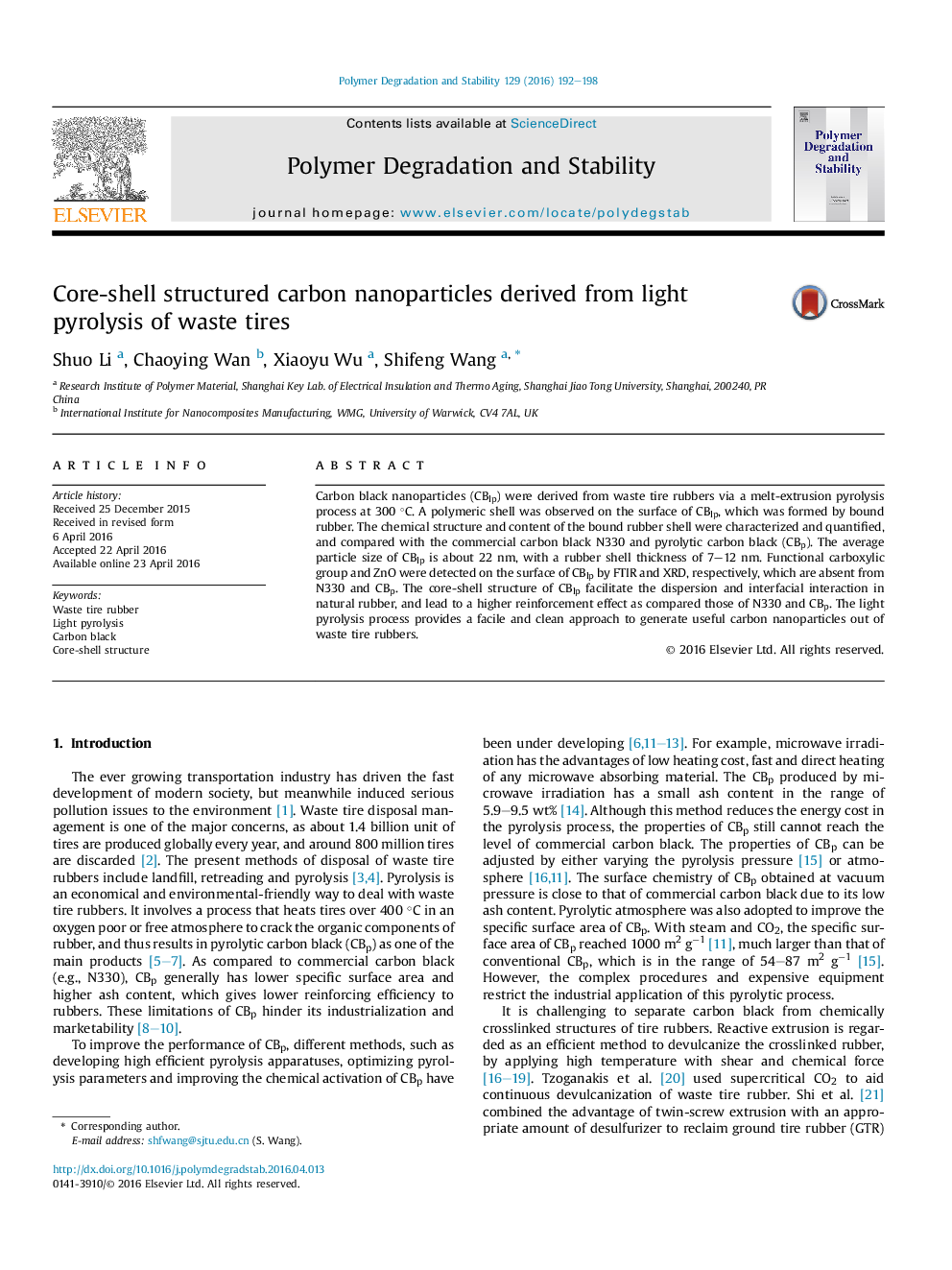| Article ID | Journal | Published Year | Pages | File Type |
|---|---|---|---|---|
| 5201116 | Polymer Degradation and Stability | 2016 | 7 Pages |
Carbon black nanoparticles (CBlp) were derived from waste tire rubbers via a melt-extrusion pyrolysis process at 300 °C. A polymeric shell was observed on the surface of CBlp, which was formed by bound rubber. The chemical structure and content of the bound rubber shell were characterized and quantified, and compared with the commercial carbon black N330 and pyrolytic carbon black (CBp). The average particle size of CBlp is about 22 nm, with a rubber shell thickness of 7-12 nm. Functional carboxylic group and ZnO were detected on the surface of CBlp by FTIR and XRD, respectively, which are absent from N330 and CBp. The core-shell structure of CBlp facilitate the dispersion and interfacial interaction in natural rubber, and lead to a higher reinforcement effect as compared those of N330 and CBp. The light pyrolysis process provides a facile and clean approach to generate useful carbon nanoparticles out of waste tire rubbers.
